Hitting a plateau in your training is never fun. You’re no longer building muscle or you’re not losing weight, even though you started off so well. You were making great progress for a little while, and then it all ground to a halt. What are you doing wrong?
Chances are, there are relatively easy fixes to break through your physique plateaus. Some of these may be related to your nutrition plan, while others are going to be adjustments to make in the weight room — or even the bedroom.
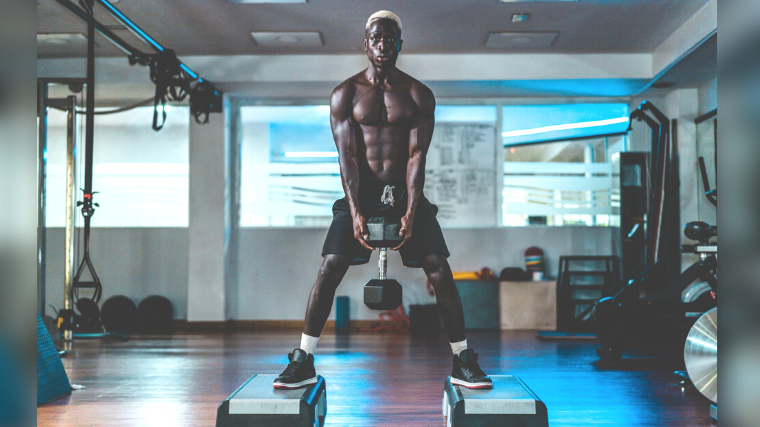
If you’re no longer seeing the results you want in the gym, read on to figure out how to get out of that rut. Here, you’ll learn how to reignite those gains.
Why Am I Not Building More Muscle?
You’ve been training at peak capacity for weeks. You’re following all the science-backed muscle-building advice you can get your hands on. All you want to do is keep building those boulder shoulders, but you’re stuck at the same level of swoleness you’ve been at for a while now.
What you’re doing in the gym might be responsible for your lack of physique changes. But it’s just as likely — maybe even moreso — that your nutrition or sleep habits are to blame.
Not Eating Enough Protein
One factor that may be contributing to your struggle to build more muscle is not eating enough protein. You need an adequate amount of protein to help your body rebuild muscles after intense workouts, forging bigger and stronger tissues.
Without enough protein, you’re likely to be putting in a lot of work for only a little return. You might have been enthusiastic about protein in the beginning of your journey. But once you got used to the gains, your dedication in the kitchen might have tapered off.
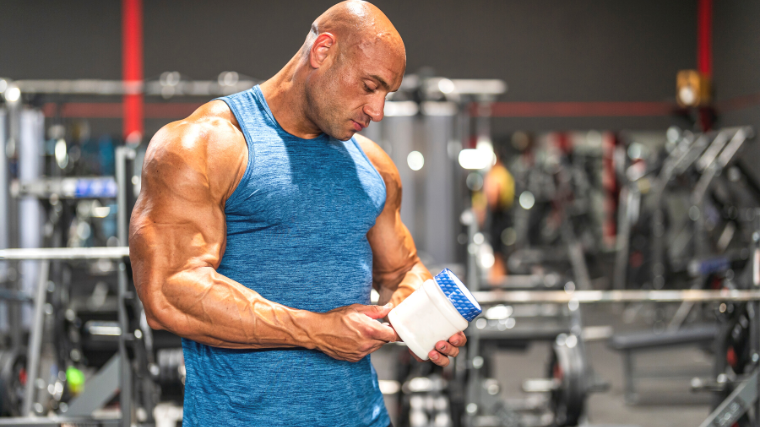
Consider a diversity high-protein foods to your diet to keep your level of enjoyment and satisfaction high.
You can use BarBend’s protein intake calculator to figure out exactly how much protein you need to build muscle. Plug in the required data below:
Protein Intake Calculator
There are many things that can affect the outcome of this calculation — activity level, age, and your goals, for example. Make sure to take all factors into consideration. Fortunately, BarBend’s calculator will automatically help you do just that.
It’s not only about protein, though. Make sure you’re getting enough daily calories overall — including carbs and fats — to give your body enough fuel to build those muscles.
Not Getting Enough Sleep
To reach your full muscular potential, it’s crucial you’re getting enough sleep. While you’re sleeping, your body is not only getting some much-needed R-and-R. It’s also releasing human growth hormone that helps build muscle. This hormone, also known as HGH, is part of the important replenishing process that your body undergoes while in NREM sleep.
NREM, or Non-Rapid Eye Movement, is the deep cycle of sleep that your body goes into. This is where it’s working its hardest to repair itself. During this repair stage, your body is not only secreting HGH, but it’s also replenishing glycogen needed to fuel your muscles.
Glycogen, or your muscle’s main fuel source, gets used up while working out. In order to replenish it, your body needs adequate rest. This ensures its glycogen levels are restored for your next training session.

If you’ve hit a physique plateau, make sure you’re getting enough shut eye. Consider reinstituting a bedtime, switching off your devices an hour or two before bed, and making sleep as big a priority as training.
Switching It Up Too Often
In the never-ending hunt for muscle growth, you may be program hopping. It’s tempting to flutter from one program to the next before giving your current training program a chance to work. But progress doesn’t happen overnight, especially if you’re more advanced in your training.
Switching up your exercises too frequently may be a contributing factor as to why you’re not building more muscle. With Instagram workouts filling up your feed, it may be hard not to add the cool new exercises you saw on your feed to your next workout. Although it’s tempting, sticking to the basics and focusing on progressive overload are the key to adding muscle.
To do this, pick a few staple exercises that you can progressively add more weight to, increase sets or reps, or increase the intensity at which you perform it.
This is not to say that you always need to stick to your current program no matter what — sometimes it is very useful to switch it up. But if you find yourself jumping from program to program every few weeks, remind yourself that consistent progressive overload is key to avoiding and breaking through plateaus.
Why Am I Not Losing Body Fat?
Working out with a physique goal in mind can be an extremely frustrating experience. This is especially true when you’ve been visibly progressing — for example, losing the weight you’ve been seeking to lose. But when that progress tapers off and even stops completely, you might get very discouraged.
Try not to despair. Fat loss is generally faster toward the beginning of a weight loss phase, and naturally slows down as you progress. However, if you’re searching for some reasons your goals might have come to a halt, here are some common culprits.
Your Calorie Intake
Many people think that just because they’re eating healthy and exercising, that they’re subject to automatically lose body fat. Ultimately, it’s not that simple. While eating whole foods and exercising are the main components of losing fat, being aware of your calorie intake can be an important subcomponent.
Counting calories is not accessible to all athletes, many of whom may have a history of body image issues and disordered eating. However, if calorie tracking is something that feels safe and effective for you, you can use BarBend’s calorie intake calculator to help. It can give you a ballpark of how many calories per day can help you reach your current goals.
Calorie Calculator
During your weight loss phase, keep an eye out for hidden calories, or calories that you may not know are there. The chicken in your chicken salad may be cooked in high-calorie oils, and the salad may be dressed in a high-calorie dressing.
These hidden calories can sneak up on you and can be quite the burden while trying to lose fat. Being aware of hidden calories and taking them into account while tracking your intake will help you avoid plateaus in your fat loss journey.
Consider making simple substitutions so that you can keep enjoying your food while also reaching your goals. For example, swap in high-protein, low-calorie foods for more calorically dense options.
Not Enough Cardio
It’s time for the part of training that strength athletes often abhor. Yup, that’s right. Cardio. If fat loss is the goal, cardio can help. While cardio is going to be a lot less significant to your fat loss journey than your nutritional habits, it can still help you along.
The most important thing about cardio for strength athletes is finding a method you enjoy that fits your particular goals. Let’s say your goal is to lose 10 pounds. You’re eating in accordance to your goal, but struggling to bring yourself to do the types of cardio that can help you boost fat burning.
Try incorporating cardio into your workout that is different from the standard running on the treadmill. You could take up a new cardio-based class, go for a run outside, or get a cardio buddy.
Especially if you’re a strength athlete that relies on quick bursts of activity — think weightlifters and powerlifters — short HIIT (high-intensity interval training) sessions can help your physique goals and your sport significantly more than long, high-impact runs.
Cardio can look different on everyone depending on what your age and physical capabilities are. Just make sure you’re doing it in a way that is healthy for you, and adheres to your goals.
Training Intensity
You’ve nailed down your calories and your cardio for your fat loss goal, but you’re still struggling to see any progress on the scale. If this is the case, you may not be lifting at a high enough intensity. Consistently training the same without any progression isn’t going to do you any good if fat loss is your goal.
When it comes to fat loss, training hard in the gym is just as nearly as eating right and perhaps even more significant than your cardio. In fact, the more muscle you have, the fuel your body needs. This can help a bit with fat-burning potential — and every little bit helps.
This is why it’s so important to ensure you’re training hard. Just as you do for hypertrophy goals, gradually increase the intensity of your training. That doesn’t only mean slapping more weight on the bar. You can manipulate your rest time, rep scheme, workout frequency, and other training techniques to boost your intensity and reignite your weight loss goals.
Strategies for Busting Through Physique and Muscle-Building Plateaus
It’s all well and good to have an idea of why your muscles have stopped growing or why you’ve stopped losing weight. But knowing how to fix your plateau is another matter entirely. Here are some unexpected ideas to help make adjustments.
Make a Nutrition Checklist
You have a training program for your time in the gym to help you build muscle or lose fat. But do you have a similar nutritional plan?
A simple checklist might help you stay on track with the nutritional practices that you need to get you where you want to go. For example, consider the following:
- Eating four-to-five servings of fruit and vegetables per day
- Getting enough macronutrients (protein, carbs, and fats)
- Getting enough micronutrients
- Keeping track of portions or calories
- Drinking enough water each day
- Eating foods that digest well to maximize effectiveness
All of these factors play a significant role in your physique goals. You can make this list as specific or as broad as you want to help keep you on track. Consider putting it up on your fridge to remind yourself which foods are in the house that make quick, nutritious meal options.
Time Under Tension
Are you blowing through your workouts without paying attention to the quality of your movements? Extending the time under tension (TUT) that you spend during an exercise may just be the method to help you bust through a hypertrophy plateau.
Increasing your time under tension not only will give you a great pump, which can increase workout satisfaction and motivation. Spending more time with each rep can also aid in increasing muscle size by maximizing the stimulus to your muscles.
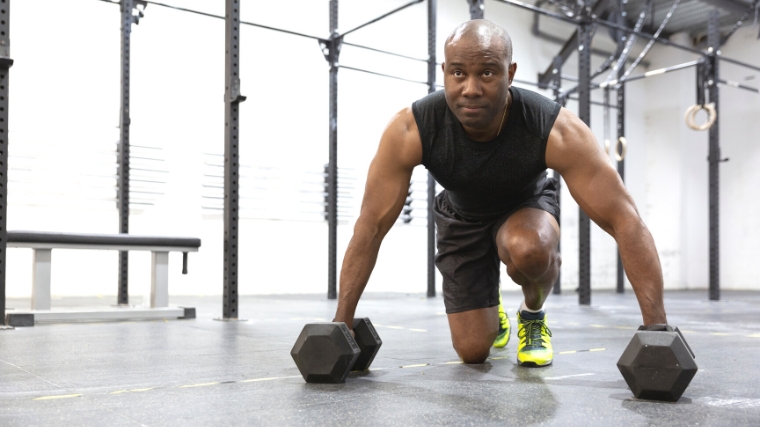
To incorporate TUT into your next lifting session, focus on the eccentric and concentric movements of your exercise. Pay attention to the total amount of time you keep your muscles under stress.
Consider slowing down the eccentric (lowering portion) of each movement. This can help bolster muscle growth significantly, especially for stubborn muscles like calves and forearms.
For example, you’re performing a biceps curl in the gym. While bringing your weight up to your biceps, you count to ten, moving the weight slowly as you count. This is your concentric movement. You then extend your arms downward, executing your eccentric movement for another count of 10.

You’ve now kept your biceps under stress for a total of 20 seconds. Paying attention to TUT will help prevent the quick, mindless reps you might otherwise do. This will give you an excellent pump, not to mention priming your mind-muscle connection and muscle-building capacity.
Deload
If you’re tempted to thow in the towel on your physique goals, it may be time to take a deload. A deload is a period of time, ranging anywhere from a few days to a week, in which you lessen your load in the gym.
This might mean you decrease the volume and intensity at which you train. It may also mean taking a complete break, or spending some time focused on mobility and low-intensity cardio. During this time, you’re giving your body and mind the time and space to recover without losing your gains.
Many bodybuilders and gymgoers will implement a deload every six to eight weeks, but you can implement it whenever you feel your body may need it. Consider performing a deload by lifting at 50 percent of your usual volume or intensity.
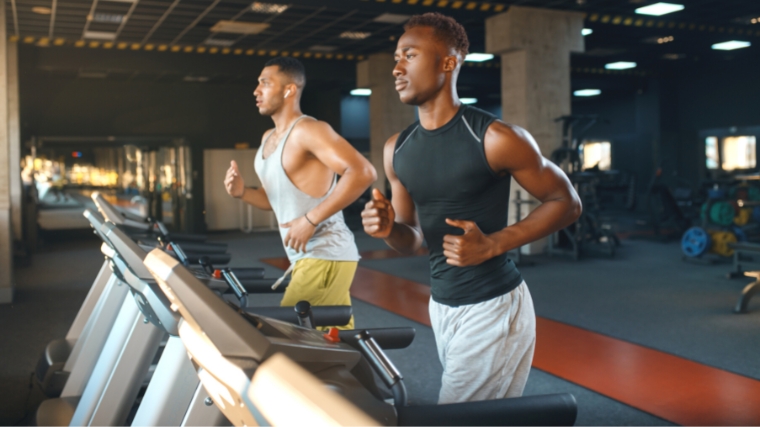
After a deload, your body will likely be itching to return to more intense lifts. This can help prevent psychological and physical burnout, which might be responsible for your current stall in gains.
Stretch it Out
While stretching is often overlooked, it’s vital to incorporate mobility training into your routine. This is especially true if you’re trying to overcome that plateau. Spend some time focusing on your mobility before, during, and after your workouts. This means paying attention to your warm-up, your cool-down, and even considering some light stretches between your sets.
By increasing your focus on mobility, you’ll make your body better-equipped to increase your training intensity.
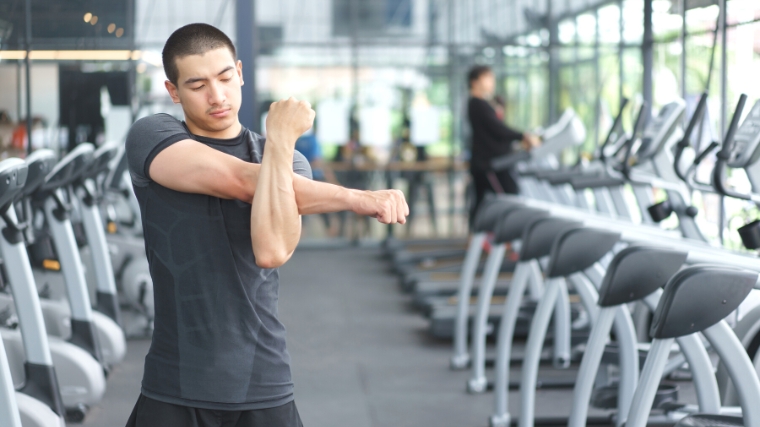
To get the most out of stretching, make sure you’re stretching muscles you’re using in your workout. For example, if you just hit leg day, you’re going to want to stretch your quads, hamstrings, hips, back, and glutes post-workout. That’s in addition to activating those muscles with dynamic stretches before your session.
If you’re new to the whole stretching thing, start slow and begin by holding a stretch for about 15 seconds. From here, work your way up and hold the stretch longer as your body allows.
Plateau No More
It’s all too easy to declare yourself a failure when it’s been weeks or months since you last noticed a new bulge in your muscles or change in the scale. Physique plateaus can be demoralizing, but they don’t have to be long-lasting,
Newbie gains are notoriously fast, while progress for intermediate and advanced lifters is typically much slower. This is natural — but it doesn’t mean you’re doomed. Keep at it (or take a strategic deload). You might find that the smallest details make the biggest difference.
Featured Image: Alfredo Lopez / Shutterstock